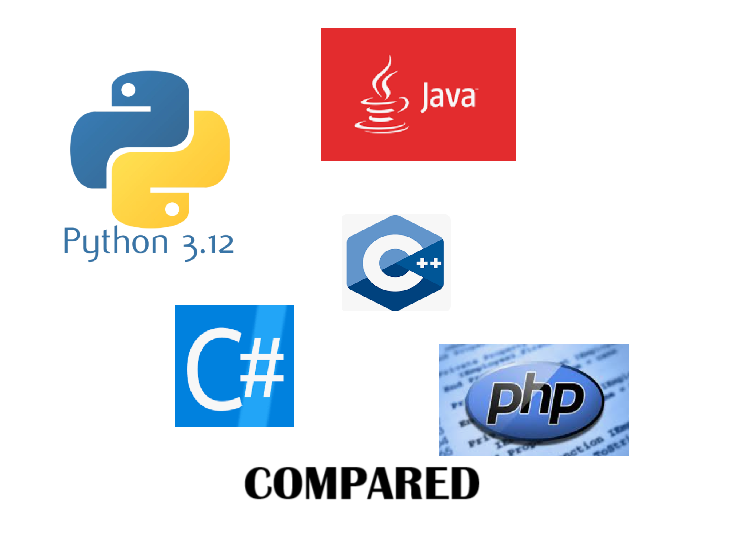When you opt for Python as your programming language, you gain access to a vast ecosystem with a rich library of packages catering to various programming needs. Beyond libraries for tasks ranging from graphical user interface (GUI) development to machine learning, Python offers a range of runtime options. Depending on your specific use case, some of these Python distributions may be better suited than others. Let’s take a closer look at various Python distributions:
CPython:
CPython serves as the Python reference implementation, setting the standard for all other Python incarnations. Developed in C, CPython is overseen by the core group responsible for major decisions about the Python language. It prioritizes backward compatibility and adherence to Python standards over raw performance. CPython is suitable for those who value compatibility and standardization but may require more manual setup, especially for virtual environments.
Anaconda Python:
Anaconda Python, produced by Anaconda Inc., targets users in data analysis, machine learning, and scientific computing. It comes bundled with a comprehensive set of libraries, such as SciPy, NumPy, and Numba. Anaconda simplifies package management and includes a user-friendly desktop app, Anaconda Navigator, to ease interactions with its environment. However, Anaconda distributions tend to be larger, which can be a concern for resource-constrained environments.
ActiveState Python:
ActiveState Python is tailored for enterprise users and data scientists. It offers a simple, preconfigured Python installation, making it an efficient choice for those who want to avoid manual setup. ActiveState Python includes both Python packages and some third-party libraries. However, upgrading projects with complex dependencies may require upgrading the entire ActiveState Python installation, which could be an issue in some development environments.

Ultimate Python Programming: Learn Python with 650+ programs, 900+ practice questions, and 5 projects
PyPy:
PyPy is a Python interpreter that provides significant performance improvements over CPython by using Just-In-Time (JIT) compilation. It accelerates Python programs, offering a notable speedup for various tasks. While PyPy excels with “pure” Python applications, it may encounter challenges when interfacing with C libraries like NumPy. The runtime’s size is larger than CPython, which can be a consideration.
Jython:
Jython runs Python 2.x code on the Java Virtual Machine (JVM). It ensures direct interoperability with Java, opening doors to the Java ecosystem. However, it only supports Python 2.x, and there’s no Python 3 support yet. Notably, Jython isn’t suitable for Android development.
IronPython:
IronPython is another bridge runtime, implementing Python on the .NET runtime (CLR). It enables seamless interoperability between Python and .NET, including using Python libraries from C#. IronPython offers compatibility with both Python 2.7 and Python 3.4 but may not support the latest Python 3 versions.
WinPython:
WinPython is designed specifically for Windows users, providing a self-contained Python distribution. It doesn’t require installation and can be used directly from a directory or removable drive. WinPython includes a range of data science-oriented packages but may be larger than CPython, posing resource constraints in some scenarios.
Python Portable:
Python Portable offers a self-contained package, similar to WinPython, suitable for scientific computing. It runs without installation, includes a variety of scientific packages, and allows package management with Python’s pip tool. However, it lacks a C/C++ compiler, and the most recent version available at the time of writing is Python 3.9.
Experimental Python Distributions:
These distributions introduce significant changes to Python or use Python as a starting point for something new. While they offer unique features, they are often not recommended for production use. Examples include MicroPython, designed for running on microcontrollers, and RustPython, an ongoing project implementing a Python runtime in the Rust language.
So its right to say that the choice of a Python distribution depends on your specific use case, preferences, and system constraints. Each distribution offers a unique set of features and trade-offs, catering to a variety of programming needs and scenarios.
Python Speed – It does matter.
The speed of Python can vary depending on the specific use case, the version of Python, and how code is optimized. As of my last knowledge update in September 2021, here’s an overview of Python versions in terms of speed:

- CPython (Standard Python): CPython is the default and most widely used Python implementation. It has a Global Interpreter Lock (GIL) that allows only one thread to execute in the interpreter at a time, making it less suitable for multi-threaded CPU-bound tasks. However, CPython’s performance has improved over the years, especially with the introduction of Just-In-Time (JIT) compilation in some cases.
- PyPy: PyPy is known for its Just-In-Time (JIT) compiler, which can significantly speed up Python code. PyPy aims to be compatible with Python 2.7 and 3.6, but it doesn’t fully support all Python libraries. For some workloads, PyPy can be substantially faster than CPython, especially when dealing with pure Python code.
- Jython and IronPython: Jython and IronPython are implementations of Python that run on the Java Virtual Machine (JVM) and the .NET Common Language Runtime (CLR), respectively. They offer good interoperability with Java and .NET libraries, but their performance may not match that of CPython for all workloads.
- MicroPython: MicroPython is designed for microcontrollers and embedded systems, where resource constraints are more important than raw speed. It provides a minimal subset of Python, optimized for small devices.
- RustPython: RustPython is an experimental Python runtime written in the Rust programming language. While Rust offers memory safety and performance benefits, RustPython is still a work in progress and may not match the performance of mature Python implementations.
It’s important to note that Python’s performance depends on various factors, including the specific task, code optimization, and the Python version. The choice of the “fastest” Python version often depends on the use case. For numerical and scientific computing, libraries like NumPy and SciPy can boost performance significantly, regardless of the Python version.
Since the Python ecosystem is continually evolving, I recommend checking the latest benchmarks and performance comparisons for your specific use case, as improvements and optimizations may have been made in more recent Python versions. Additionally, consider profiling and optimizing your code to achieve the best performance regardless of the Python version you choose.
Curated for you






WONDERFUL Post.thanks for share..extra wait .. ?
Thank you for your post. I really enjoyed reading it, especially because it addressed my issue. It helped me a lot and I hope it will also help others.
Your articles are extremely helpful to me. May I ask for more information?